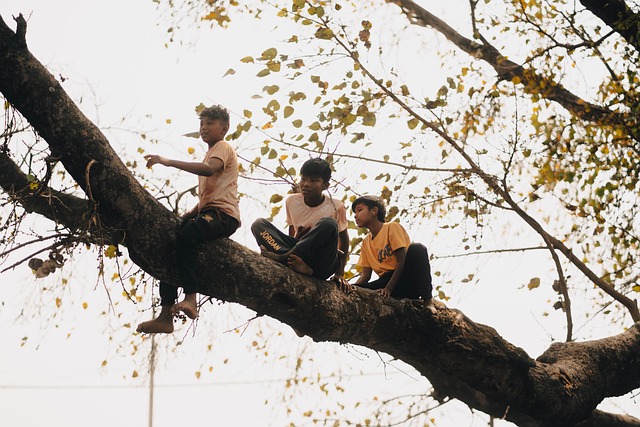Child protection systems rely on foster care and guardianship as vital safety nets for abused, neglected, or vulnerable children unable to live with their biological families. Foster parents provide temporary nurturing environments while addressing each child's unique needs, aiming for long-term stability through supportive services. Guardianship offers a permanent solution by granting legal responsibility to caregivers, ensuring the best outcomes for these children and safeguarding their future within child protection systems. Effective child protection involves robust legal frameworks, meticulous case management, and multi-agency collaboration to create stable environments catering to physical, emotional, and developmental needs, ultimately fostering resilience and healthy development for vulnerable youth.
“In the realm of child protection, fostering and guardianship play pivotal roles in ensuring vulnerable youth find safe havens. This comprehensive article delves into the intricate world of these care arrangements, offering a holistic view of assistance mechanisms. From understanding the foundational principles to exploring legal considerations, we uncover strategies for supportive services that drive positive outcomes. Furthermore, we emphasize the significance of building sustainable homes, providing long-term solutions within the broader context of child protection.”
- Understanding Foster Care and Guardianship: A Foundation for Child Protection
- The Role of Supportive Services in Fostering Positive Outcomes
- Navigating Legal Aspects: Ensuring Fairness and Safety
- Building Sustainable Homes: Long-term Solutions for Vulnerable Children
Understanding Foster Care and Guardianship: A Foundation for Child Protection

Foster care and guardianship are vital components of child protection, offering a safe haven for children who cannot live with their biological families due to various reasons, including abuse, neglect, or family circumstances. Understanding these concepts is crucial to ensuring the well-being and secure future of vulnerable children.
In foster care, children temporarily reside with approved caregivers, known as foster parents, who provide a nurturing environment while working towards the child’s long-term stability. This can involve helping them overcome challenges, receive necessary support services, and prepare for either returning home or transitioning to permanent custody, often through adoption or guardianship. Guardianship, on the other hand, grants legal responsibility for a child’s care and welfare to a designated individual or organization, offering a permanent solution for children who cannot be reunited with their birth families. Both foster care and guardianship require a strong support system, including social workers, lawyers, and community resources, to ensure the best outcomes for the children involved, ultimately safeguarding their future and promoting their overall child protection.
The Role of Supportive Services in Fostering Positive Outcomes

Supportive services play a pivotal role in fostering positive outcomes for children involved in foster care and guardianship cases. These services extend beyond basic care, offering a range of assistance tailored to meet individual needs. From educational support and therapy to life skills training, they help children thrive in their new environments. By addressing emotional, psychological, and social challenges, these services enhance the child’s well-being and increase the chances of successful long-term placements.
In the realm of child protection, supportive services act as a crucible where vulnerable children can find stability and nurturing. They facilitate smooth transitions, helping them adapt to new homes, schools, and communities. Moreover, these services often involve collaboration between various agencies, ensuring a holistic approach that considers each child’s unique circumstances. This coordinated effort is essential for breaking down barriers and creating a supportive landscape, ultimately aiming to prepare children for healthy, permanent living arrangements.
Navigating Legal Aspects: Ensuring Fairness and Safety

Navigating the legal aspects of foster care and guardianship cases is a critical component in ensuring fairness and safety for all involved, particularly the vulnerable children under protection. The child protection system relies on robust legal frameworks to guarantee that every child receives appropriate care while their long-term interests are considered. This includes meticulous case management, where professionals meticulously track progress, ensure compliance with legal requirements, and regularly review the well-being of the child.
Legal processes play a pivotal role in safeguarding children by establishing clear guidelines for foster carers and potential guardians. These regulations cover various aspects, from background checks and training requirements to custody rights and obligations. By upholding these standards, the system strives to prevent any potential harm and provide a stable, nurturing environment for children who need it most, ultimately fostering their healthy development and future well-being.
Building Sustainable Homes: Long-term Solutions for Vulnerable Children

Building Sustainable Homes is a crucial aspect of providing long-term solutions for vulnerable children within foster care and guardianship cases. It goes beyond temporary placement, focusing on creating stable environments that cater to their physical, emotional, and developmental needs. By implementing robust strategies, child protection services can ensure these children have a sense of belonging and security, which is vital for their overall well-being and future success.
This approach involves not just matching children with suitable caregivers but also empowering families with the necessary resources and support to nurture them effectively. It includes providing access to quality education, healthcare, and social services, as well as addressing any trauma or attachment issues that may have contributed to their vulnerability. Ultimately, Sustainable Homes initiatives aim to break cycles of instability, fostering resilience and promoting healthy development for children in care.
In conclusion, fostering positive outcomes for vulnerable children requires a holistic approach that combines robust legal frameworks with comprehensive supportive services. By understanding the intricate dynamics of foster care and guardianship, navigating the legal aspects for fairness and safety, and building sustainable homes, we can ensure child protection and secure brighter futures for these young lives.
